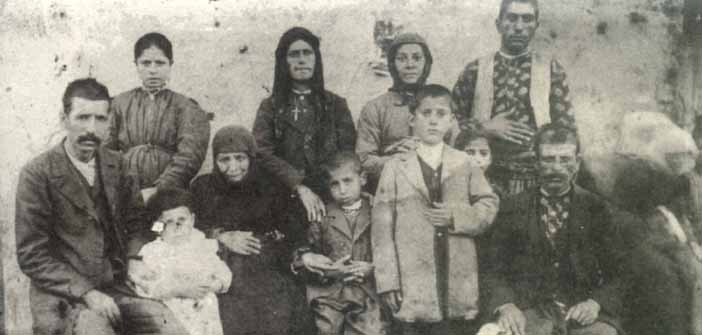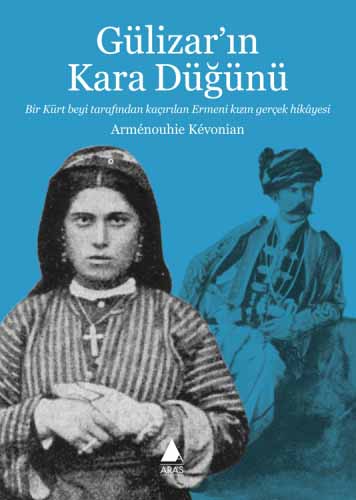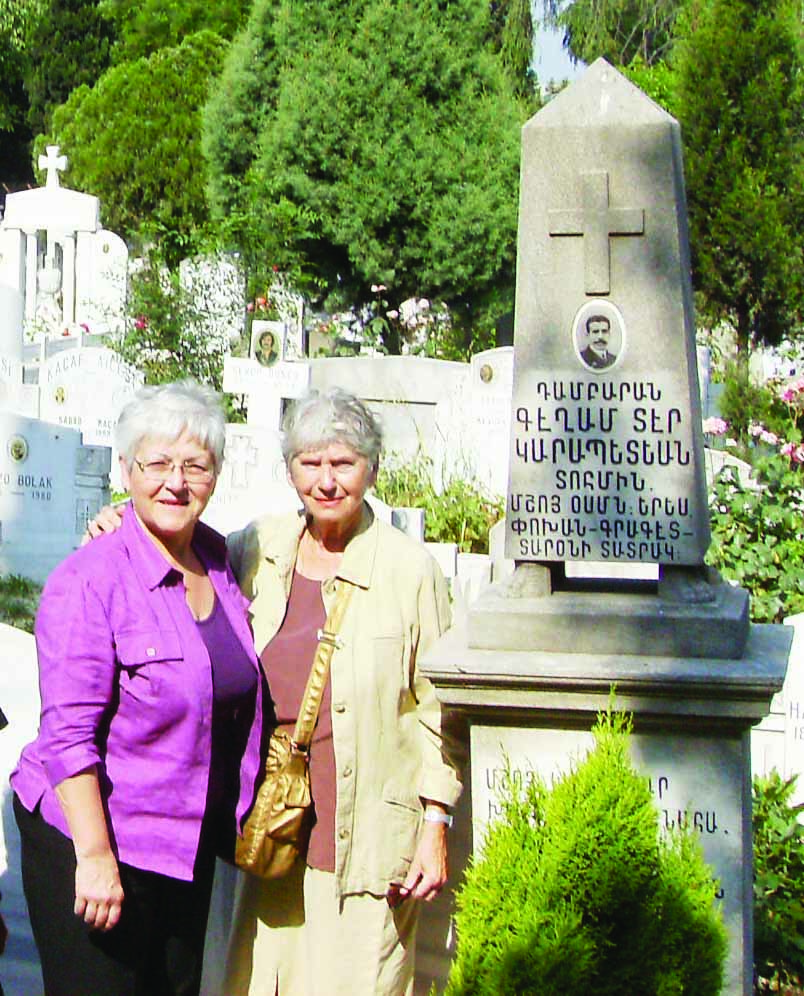Gülizar diye bir ayna


Tarihin en karıştığı dönemlere genelde resmi anlatının kalıp aktarımları damgasını vurur. Çoğunlukla gerçekleri saklama, zulümlere gerekçe bulma odaklı ve inkâra dayalı bu anlatıların ardında gizli hakikat ise tanıklıklar ve insan hikâyeleri ile ortaya çıkar. Osmanlı-Rus savaşının patlak verdiği, bağımsızlık söylentileri ve toprak kaybı korkusunun eşzamanlı yayıldığı 1877-78 yılları ve sonrasında İstanbul hükümetinin doğudaki bölgeleri kontrol etmek üzere Kürt aşiretlerini devreye sokması ile Ermeni halkı için başlayan huzursuzluk ve korku ortamı da, 1915’e giden süreçte resmi anlatının görmezden geldiği bir zaman dilimidir. Şimdi bu dönemi, uğruna ağıtlar yakılan, sıradışı bir kadının hayat hikâyesi üzerinden okuma ve anlama fırsatımız var. Bizzat kızı Armenuhi Kevonyan tarafından kaleme alınan Gülizar’ın hikâyesi, bölgenin en korkulu gücü, Kürt aşireti lideri Musa Bey tarafından kaçırılan on dört yaşındaki bir genç kızın şahsında, bir toplumun tarihini kayda geçiriyor.

İnsani duyguların en güçlülerinden biri olan korku, çoğu zaman korkaklık ve cesaret karşı kutuplarına hapsedilerek yorumlanmaya çalışılır. Oysa cesaret, korkmamak değildir. Korkuna rağmen harekete geçmekten öte çare bulamamak, bir diğer anlamıyla bütün korkularını korkmaktır. Gülizar da işte böyle bütün korkularını korkmuş bir kişilik.
Khars köyünün reisi Miro’nun (Mihran) torunlarından biri olarak Muş’ta doğan ailenin en güzel kızı Gülizar, aile reisinin Muş’a sığınarak kaçınmaya çalıştığı Musa Bey zulmünün kurbanı olarak kaçırılır. Musa Bey, kızı bir düğünde görüp beğenmiş ve reddedilmenin hıncına yöre halkının kendisi hakkındaki şikâyetlerini Bitlis Valisi Edhem Paşa’ya iletenlerden birinin de Miro olduğu bilgisini eklemiştir. İntikam, bir Paskalya haftasının kutsal Pazartesi gecesinin o en savunmasız saatlerinde gelir. Musa Bey 150 adamıyla Miro’nun evini kuşatıp Gülizar’ı kaçırır.
Felaketle gelen direniş kudreti
Bu yaşatılan ne ilk ne de son zulümdür. Kaçırılan kızların kaderi de çoğunlukla ölüm ya da boyun eğiş çerçevesinde belirlenir. Gülizar’ın hikâyesini biricik kılansa, onun bu felâketi, bir güç mücadelesine dönüştürme azmi. Musa Bey’in Hevedig köyündeki evine götürülen Gülizar’ın, zaten dört karısı olan Musa Bey yerine, kardeşi Cezahir’e verilmesi uygun görülür. Yeni ismi Fatma’dır ve ne yaşaması uygun görülürse onu yaşamaya mahkûm bir hayatı vardır. Ya da öyle sanılır.
Gülizar her fırsatta ailesine haber ulaştırmaya, büyük güç ürettiği dinini, dilini, ismini, Ermeniliğini, geçmişini kısacası varlığını korumaya girişir. Ancak zulüm doğası gereği isyana karşı daha da bilenir. Aşağılamanın, dayağın, tehdidin günlük hayatın doğal parçası sayıldığı bir ortamda Musa Bey’in zulmünü anlamak için, kızlarının ölmediği haberiyle sevinen ailenin, onun kimin elinde olduğunu öğrendiklerinde, “Ölüm kızımızı alsaydı da Musa Bey’in elinde olduğunu duymasaydık!” feryatlarına kulak vermek yeterlidir.
Kaçırılışı sonrası açılan mahkeme süreci Patriklik, Milli Ermeni Meclisi gibi kurumların ihtiyatlı yaklaşımını, Bitlis halkının desteğini, dönemin en etkili ruhanisi Khırimyan Hayrig’in kol kanat gerişini aynı anda yaşatır Gülizar’a. Gülizar sanki bir aynaya döner, herkes onda kendi hakikatini görür.
Mahkeme sınavı
Ailenin çabaları sonucu Sultan, Bitlis valisine Gülizar’ın mahkemeye çıkıp Kürt mü Ermeni mi olduğuna dair ifade vermek üzere mahkemeye çıkarılması emrini verir. Bu öyle çetin bir sınavdır ki Gülizar annesine artık Müslüman ve Kürt olduğunu haykıracak, bir yandan da mahkemeye çıkacağı günü bekleyecektir. O gün geldiğinde annesinin kollarına koşup “Aman! Anne! Ben Ermeni’yim, Ermeni olarak öleceğim!” diye haykırır, üzerine zorla geçirilmiş kıyafetleri yırtıp içliğiyle yarı çıplak kalır. Şöyle diyecektir: “Baba evime Kürtler tarafından kaçırıldığım halimle dönmek istiyorum.”
Mahkeme süreci Patriklik, Milli Ermeni Meclisi gibi kurumların ihtiyatlı yaklaşımını, Bitlis halkının desteğini, dönemin en etkili ruhanisi Khırimyan Hayrig’in kol kanat gerişini aynı anda yaşatır Gülizar’a. Gülizar sanki bir aynaya döner, herkes onda kendi hakikatini görür.

Son nefese kadar direniş
Muş Ermeni Piskoposluğu Sekreteri, papaz, Muş-Bitlis Ermeni mebusu, Taşnak örgütü yöneticilerinden Keğam Der Garabedyan ile evlenen Gülizar, hayatının sonraki yıllarını da zulme direniş olarak yaşar. Zira devletin yok etme siyaseti değişmez. O kadar ki, Musa Bey tüm suçlamalardan aklanacak, itiraz üzerine açılan yeni davada Mekke’ye sürülecek ve bir yıl sonra Sultan Abdülhamit tarafından Hamidiye Alayı’nın başına getirilecektir. Sonrası 1915 cehennemidir.
Kelimenin tam anlamıyla son nefesine kadar memleket hasretini soluyan Gülizar, ölümünü de direnişe dönüştürerek şöyle sesleniyor bizlere: “Keğam, onun için yaban toprak olan İstanbul’da, yüreğinde vatanı Muş’un hasretiyle öldü. Bense, teselli bulmamış vaziyette yaşıyorum. Mucizelere inanıyorum. Kutsal toprağına beraber karışmamız için, Keğam’dan geri kalanları benimle birlikte memleketimize götüreceğim gün gelene dek direneceğim.”
‘Gülizar’ın Kara Düğünü’nde bir yazısıyla yer alan Gülizar’ın torunlarından Keğam Kevonyan da kuşaktan kuşa akan o yokluk hissini ve buna karşı verilen mücadeleyi şöyle anlatmış: “Gülizar, Muş’un köylüleri ve hacıları, okul ve canlandırma misyonerleri, özgürlük savaşçıları, hepsi öldü. Taşlar da öldü; dağlar, ovalar, nehirler de. Hepsi öldü, güzel veya trajik bir ölümle, bazen de yaşarken öldüler. Ama imanları ölmedi, çünkü gerçekleşmeye vakti olmadı ve bizlerde yaşıyor. Bizlerde yaşayan onca ölü, ruhumuzu ve irademizi şekillendiriyor, görüşlerimizi yönlendiriyor, kaderimizi çiziyor...”
Keğam Kevonyan’ın son çağrısı bir vasiyet olarak kabul edilebilir. “Masumlar mezarlarına kavuşmadıkça, hakikat yolunu bulmadıkça, görevimiz sonlanmış olmayacak ve Kabil’in ensesine binecek göz, fal taşı gibi açık olacak.”
O hakikate ulaşmak yolunda Gülizar’ın hikâyesi herkese ilham, irade ve inanç bahşetsin.



